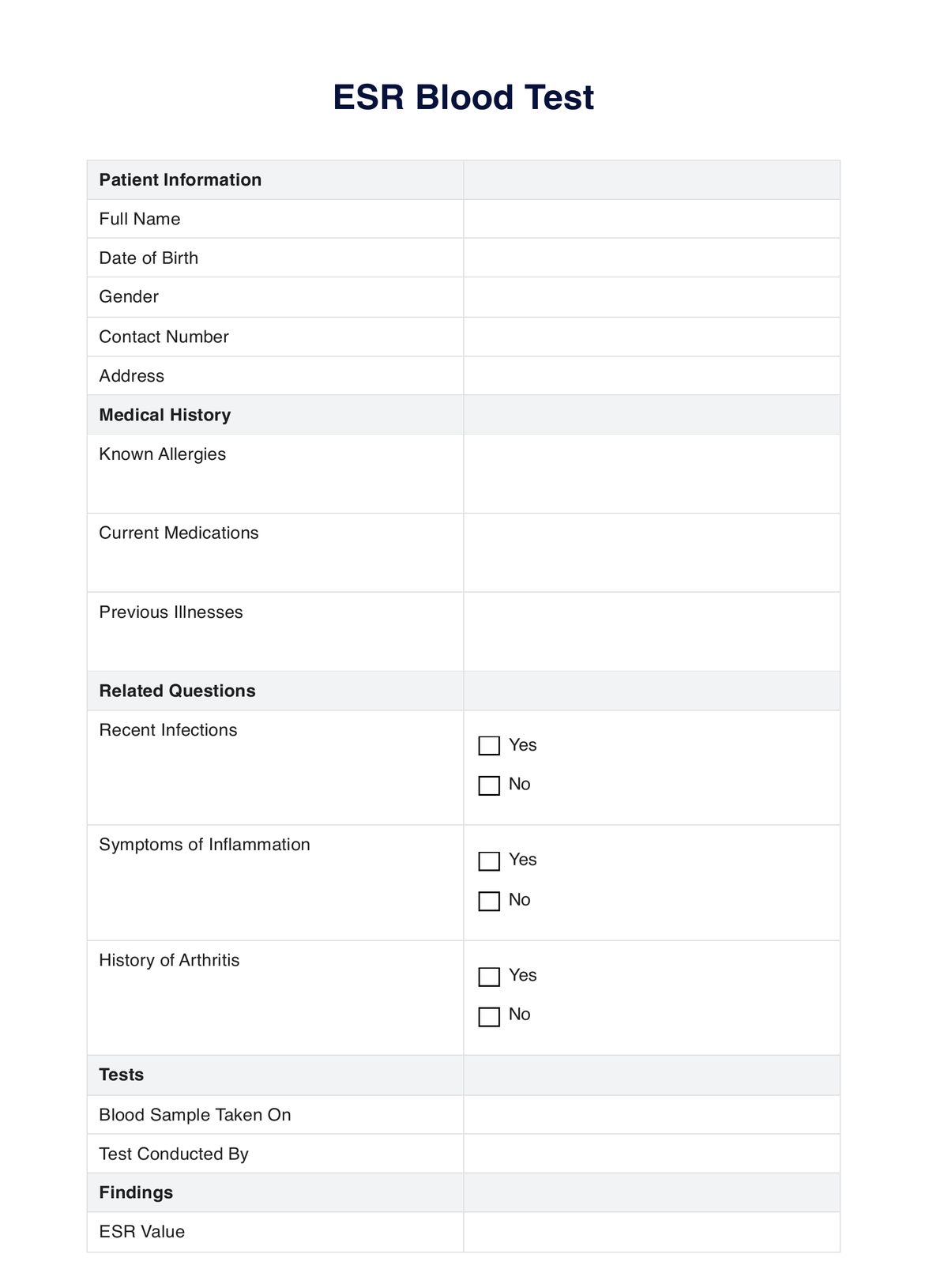The ESR blood test measures the rate at which red blood cells settle at the bottom of a test tube. It's an indirect measure of inflammation in the body and can help diagnose conditions like rheumatoid arthritis, systemic lupus erythematosus, and others.












